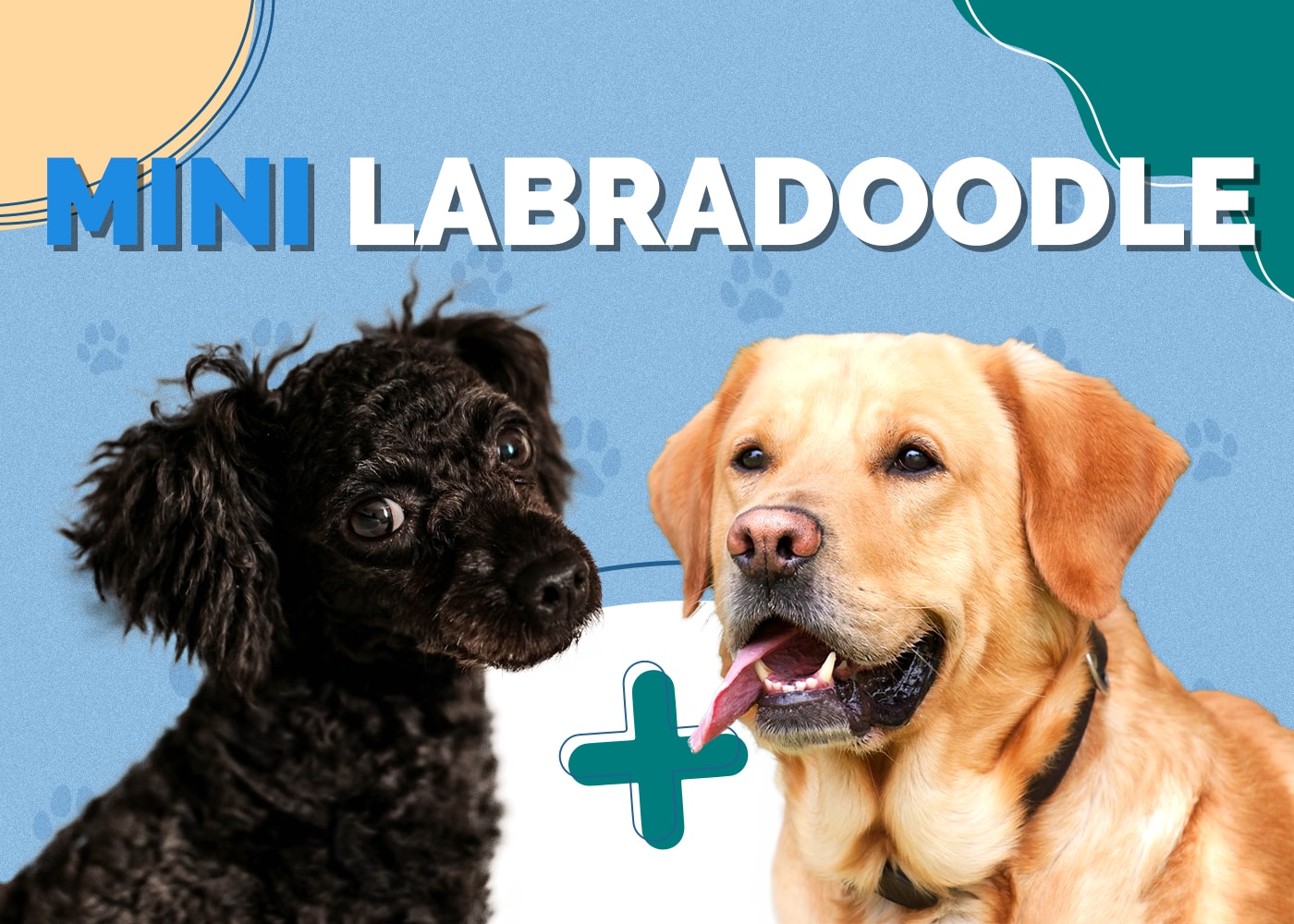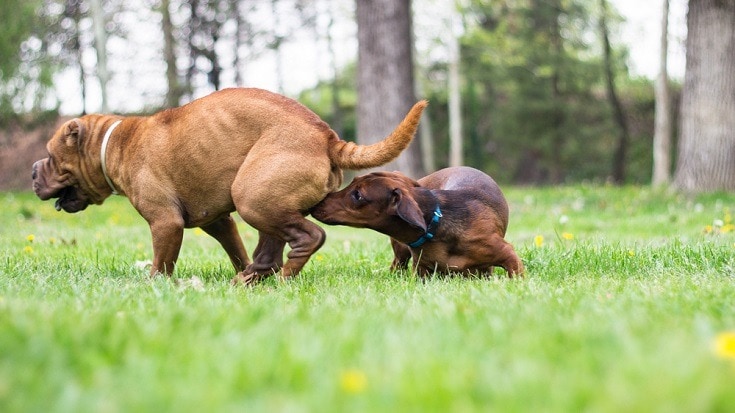How to Train a Cane Corso – 9 Expert Tips
By Ed Malaker
Updated on
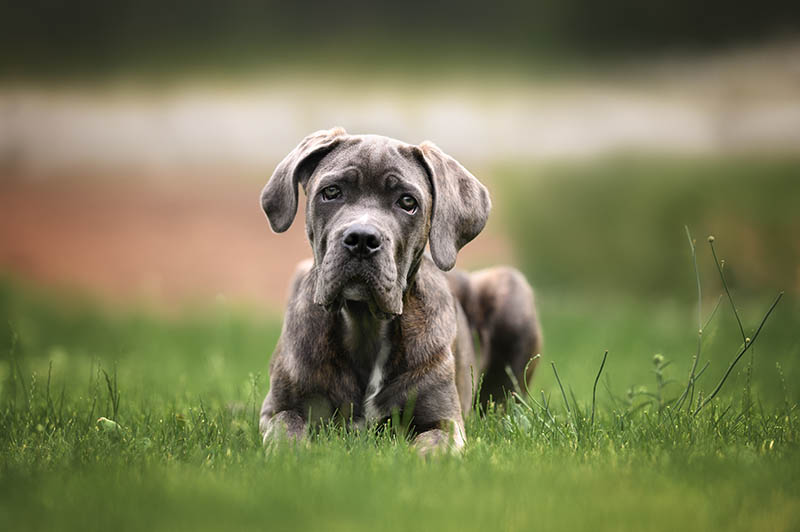
The Cane Corso is a fantastic family pet, but due to their large size, many experts recommend training them as a puppy so they are easier to manage as an adult. However, many people aren’t sure how to do that. If this sounds like your situation, keep reading as we list several tips and tricks for training a Cane Corso so they are well-behaved and easy to control and won’t become aggressive.
When Your Dog Is 8–16 Weeks Old
1. Bonding Time
A puppy is usually ready to leave their mother when they’re about 8 weeks old, and that’s the earliest that many people receive their new pets. This is a sensitive learning time for the Cane Corso, so you will want to spend as much time bonding with them as possible. A happy and playful dog at this stage is more likely to remain that way throughout adulthood. If an owner mistreats or ignores the dog, they are more likely to become mean and aggressive. Your bond will form as you play, feed, and walk with your pet. They will begin to trust you, which is essential to getting them to follow your commands.

2. Socialization
It’s essential to socialize your new puppy with other people and animals in a positive environment. Let your Cane Corso spend as much time as possible with other family members and pets. The people and animals that they get to know by the time that they’re 16 weeks old are whom they will be friendly with for the rest of their life. Experiencing many new things during this time will also help them be less fearful as an adult.
3. Crate Training
Many people like to let their dogs sleep with them or on a comfortable dog bed, but crate training can be advantageous for pet owners. The crate can help keep your Cane Corso from becoming coddled and demanding, a common problem with this breed. The crate helps them understand their place in the household and gives them a private area where they can feel safe. Many dogs enjoy their crate, and it can help everyone get a better night’s sleep, but you will need to start early to train them to use it.
4. House Training
While taking your dog outside is the best way to let them do their business, you might not always be available, which can lead to your pet relieving themselves in the house. However, designating a safe spot and training your dog to use it can greatly reduce accidents and limit your cleanup projects to one area. Puppy pads and newspapers can make cleanup easy and teaching them as a puppy can have good results. To train your pet, carry them to the designated area from the crate right after they wake up and give them a treat and praise when they relieve themselves in the correct spot.
5. Obedience Training
Since the Cane Corso is so large, obedience training is a must, and you will get better results if you start early. Schedule short training sessions at the same time every day, and remain consistent so your dog gets into a routine. Teach them to come to you when you call their name, and give them plenty of praise and a treat when they do. We also recommend training them to follow the commands of sit, stay, stop, and leave it, to ensure that your dog behaves in critical situations.
When Your Dog Is 16 Weeks–6 Months Old
6. Impulse Control
You want to continue the training that you started in weeks 8–16, but now your dog should be old enough for you to start working on impulse control, which can reduce the amount of whining, barking, jumping around, and pulling on the leash that your dog does. To train impulse control, hold the food bowl above your dog’s head, and give the command to sit. Once your dog sits, start to put down the food bowl, but raise it back up if your dog stops sitting. Repeat until your pet remains sitting until the bowl is on the floor. This training teaches the dog that food comes from you and that they must follow orders to get it. You can use the same technique on other items to get similar results.
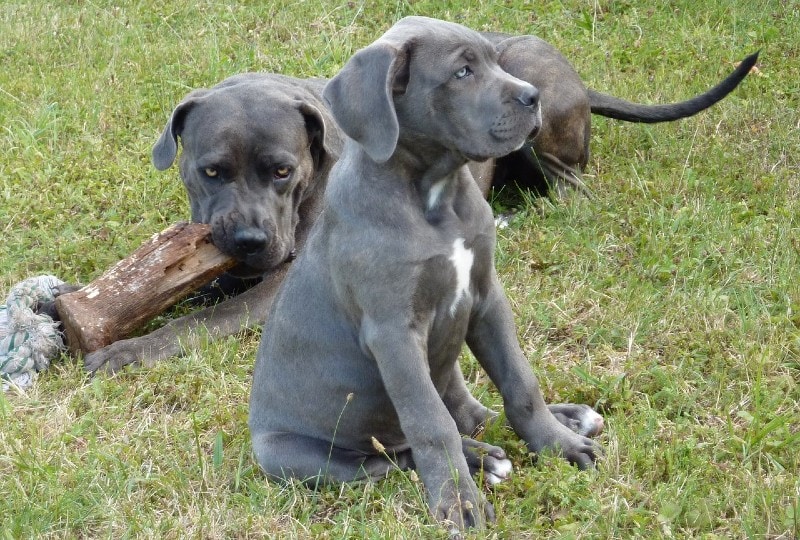
7. Leash Training
Once your pet reaches 16 weeks, you need to get them used to a leash so they don’t pull you around when they are fully grown. Teaching a Cane Corso to use a leash is not difficult, but it’s not something that dogs instinctively know, so it can take a while.
- Begin by letting your dog wear the collar and leash in the house for a short amount each day while you play with them and give them treats. The more fun your dog has while wearing the leash, the more they will look forward to wearing it.
- Teach your dog a specific cue that calls them to you. Many people use a word like, “here,” or you can make a clicking sound with your mouth. The only requirement is that it should be easy for your pet to hear and remains consistent.
- Call the dog using your cue sound while they are wearing the leash in the house, and give them a treat when they come to you.
- Take the leash and walk a few steps, talking to your dog as you go and providing treats to get them used to following you while you hold the leash.
- Keep the sessions short, and once your dog gets used to the idea, take them outside.
- The outside environment will have plenty of new distractions, so be patient. Spend a few days getting your dog used to walking around the yard before you leave the property.
- If your dog pulls, stop moving and refuse to move again until the dog returns to your side.
8. Socialize
While the big socialization window ends at around 16 weeks, it is still a good idea to ensure that your pet gets plenty of interaction with people and pets so they stay friendly.
When Your Dog Is 6 Months Old–Adult
9. Obedience
Once your Cane Corso is about 6 months old, they will start to become more mature, and you can expect them to start testing their boundaries about what they can get away with. They might even attempt to take charge of the household. It’s crucial to be firm and reinforce your training during this time and practice obedience and impulse control to keep the dog friendly. Plenty of daily exercises and mental stimulation can help them stay happy and relaxed.
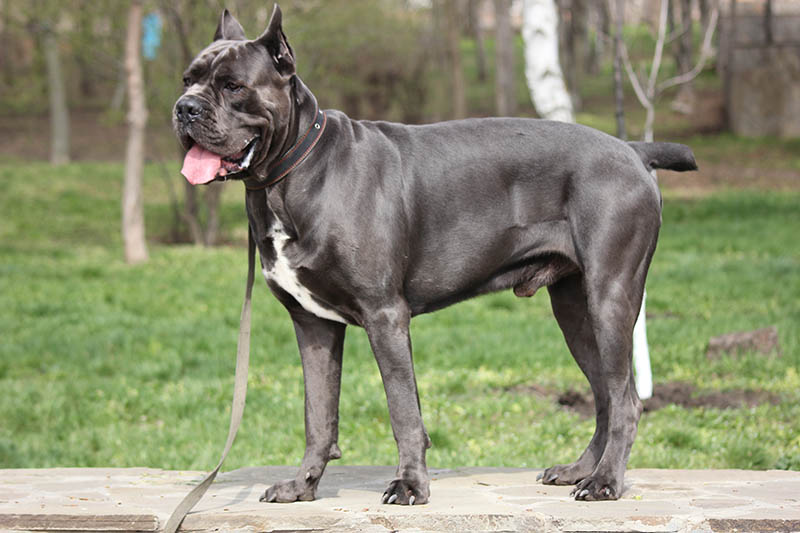
Tips and Tricks for Training Your Cane Corso
Always be gentle with your pet while training, and never get angry or yell at them. Making training sessions fun is the best way to keep your dog focused.
Keep the training sessions short. The Cane Corso has a short attention span and gets bored easily. If the sessions go on too long, they will become distracted and might not look forward to the next session, making training more difficult.
Hold your training sessions at the same time each day, and remain consistent to get your pet on a routine. Many people like to train their dogs after playtime so they are more relaxed and ready to learn.
If your pet is barking excessively or misbehaving, adding more exercise to their daily routine will often get them under control. The Cane Corso is a working dog that needs a job to do.
Most experts recommend training your dog yourself instead of sending them to a professional because they need to take orders directly from you. However, if you are having trouble training your dog, many pros will provide you with good advice and tips — for a small fee.
Conclusion
Training a Cane Corso is not difficult, but it is a long process that starts as soon as you receive the dog at around 8 weeks old and continues until the dog is at least 6 months old. Socialization is extremely important because these dogs get so large, and you need to be able to keep them under control when they are fully grown. Once they reach 16 weeks, you can start leash training, which will help you get them out of the house so they can get more exercise. This will help them feel more relaxed, and impulse control training will help keep them from continuously barking and whining.
Featured Image Credit: otsphoto, Shutterstock




